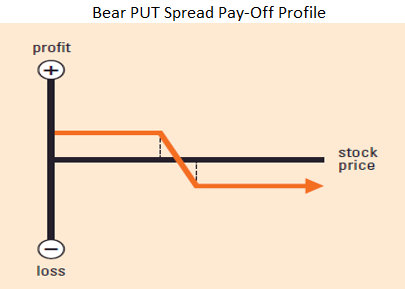
With the help of this strategy, one can make good returns with moderate risk.
Basic:
If a trader is bullish on an underlying asset, he will buy a CALL Option (the trader expects an increase in the underlying asset).
If a trader is bearish on an underlying asset, he will buy a PUT Option (the trader expects a decrease in the underlying asset).
In this article, we will explain the Bear PUT Spread Strategy
This is a two-legged strategy where 2 options positions are taken simultaneously. The strategy consists of buying one PUT to make a profit from a decline in the underlying asset and selling one put with a lower strike price to offset the partial cost. The Premium paid is more than the premium received in this strategy and that is the reason the strategy is also called the Debit spread.
Implementation:
Buy one in the Money PUT option and Sell one out of the Money PUT option with the same underlying asset, with the same expiry date but a different strike price.
Let us understand this strategy with the help of an example:
Assuming the Nifty Spot Price is at 15600
Buy Nifty 15700 PE @ 160 (Premium Paid) And Sell Nifty 15500 PE @ 75 (Premium Received)
The Profit /Loss is -85 points (-160+75) during the start of this strategy.
Let us understand the payoff at various levels of expiry:
Case 1: If Nifty on expiry day closes at 15800, then:
The total Profit /Loss, in this case, is -85 points (-160+75)
Case 2: If Nifty on expiry day closes at 15600, then:
The total Profit /Loss, in this case, is +15 points (-60+75)
Case 3: If Nifty on expiry day closes at 15615, then:
The total Profit /Loss, in this case, is 0 points (-75+75). This is also the Break Even Point (BEP) for this strategy
Case 4: If Nifty on expiry day closes at 15500, then:
The total Profit /Loss, in this case, is 115 points (40+75)
Summary:
In contrast to a plain long put, the maximum profit one can make is limited with this strategy. This is part of the trade-off, the short put premium received reduces the initial cost and risk and this results in setting a cap on the profits.
That’s all for this post. We hope you have learned something new. Let’s catch up on the next insightful articles.
Happy Investing and Trading🙂
Other articles you may like
Post Views:
146




